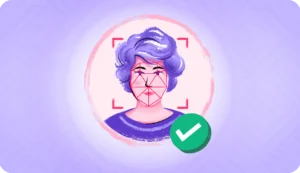Introduction
Facial Recognition Security Systems form a technology that uses the face to identify people uniquely. We have used facial recognition systems for years, particularly in law enforcement. The technology has evolved dramatically in recent years and is now used by banks, airlines and other organisations to help protect their data from hackers.
Overview of Facial Recognition Systems Security
Facial recognition systems security is a biometric technology used to identify people. To determine if there is a match, the system compares facial characteristics, such as the distance between the eyes and nose or the height of eyebrows, with data on file.
Facial recognition systems can verify someone’s identity. It monitors people’s movements in public places like airports, train stations and shopping malls. Facial recognition systems security is also used in law enforcement: identifying criminals by matching them against databases of known offenders.
How does Facial Recognition Systems Security work?
Facial recognition systems are used to identify people based on their facial features. We can use a facial recognition system for many purposes, including law enforcement, entertainment and business.
Facial recognition systems use cameras to capture images of people’s faces. The system then analyses the captured image, which compares it with all the stored images in its database. If there is a match between your captured image and one of these stored images, then you will be identified as that person.
They identify criminals using facial recognition systems by law enforcement agencies. Businesses and entertainment companies also use these systems to protect their property and prevent unauthorised use of their products.
The facial recognition process involves three steps.
- Detection: The system uses cameras to scan for and detect faces in the scene.
- Verification: The system compares the detection results with images stored in a database, looking for a match.
- Identification: The system’s final step is to confirm whether or not there is an exact match between the detected face and an image stored in its database. If there is an exact match, the person whose face was scanned can be identified by matching their personal information against that of their government ID card or passport (or other documents).
Uses of Facial Recognition Systems Security
Facial recognition systems securely detect people by their faces: verification, identification, tracking, and security.
Biometric data like fingerprints or iris scans are used to verify identity. These approaches provide better protection than passwords since they’re harder to steal or forget. Passwords may be stolen or forgotten purposefully or accidentally (e.g., by forgetting). They offer strong protection against illegal access while enhancing productivity since users don’t have to recall several usernames and passwords. Improperly done, this might disclose personal information (e.g., getting malware on their computer).
Benefits of Facial Recognition Systems Security
They can prevent identity theft with facial recognition security. Banks and individuals can use AI face recognition security solutions, as they require a password that no one else can guess. Facial recognition security solutions prevent identity theft by requiring a password that no one else can guess.
In public settings, facial recognition security is growing. Some law enforcement agencies utilise it, and Amazon and Microsoft sell it. Facial recognition security systems vary. Some are used for personal and law enforcement purposes. Facial recognition systems prevent identity theft by only providing computer access to the owner. Even if your password is hacked, no one can access your information.
The benefits of facial recognition systems security are many and can include:
- Reduced costs: Facial recognition systems help manage physical security systems by using more accurate technology to identify users rather than relying on less accurate biometric identification methods.
- Reduced false positives: Compared to other biometric methods, facial recognition systems achieve higher accuracy and fewer false positives.
- Increased security: Because facial recognition systems are more accurate than other forms of biometric identification, such as fingerprints or iris scans, they can create more secure environments by allowing only people through doors or onto premises.
- Facial recognition systems can be used with other physical security devices, such as access control systems and CCTV cameras, to ensure that only authorised people enter a facility or building.
- Increased safety: Because facial recognition systems are more accurate than other forms of biometric identification, such as fingerprints or iris scans, they can create more secure environments by allowing only people through doors or onto premises.
- Improved user experience: Facial recognition systems help improve the user experience by making it easier for employees and customers to get into buildings with their faces instead of keys or cards. Facial recognition systems can also improve the user experience by allowing people to get into buildings more quickly with their faces. This technology may also reduce waiting times for customers entering stores, which can improve the shopping experience for everyone.
Conclusion
We use facial recognition systems security in many different ways. They can unlock your phone, identify criminals, and even be used as a tool for surveillance. While some benefits are associated with using this technology, it also has some risks (i.e., privacy concerns).

















